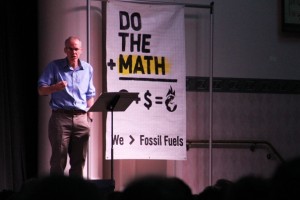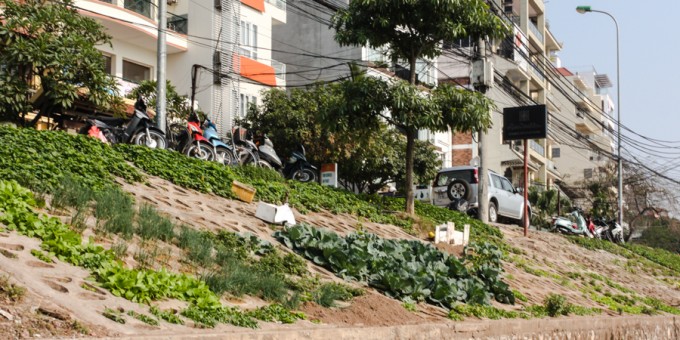
by Vijay Kolinjivadi
The seemingly insurmountable ecological crisis and staggering inequality facing humanity requires a vision that links urgency with inspiration. In recent years, a number of calls for a ‘safe living space’ have been made. This refers to a civilization that addresses fundamental human needs but does not overstep biophysical limits. In other words, we need governance institutions that reside between a social ‘floor’ and a biophysical ‘ceiling’. While this has garnered increasing traction among academics, activists, policy-makers, and well…just about anyone who cares about the future of children, unfortunately, the centre of power (Washington, London, Ottawa etc.) has another future vision.
The supreme rationale of this vision is to forever fabricate new ways to create new wants (i.e. new commodities) from consumers in the so-called “developed” world. The creation of new markets for new ‘wants’ we didn’t even know we wanted does not appear without consequence. Resource inputs, cheap human labour and a repository for waste products become imperative as ever-growing markets become a touchstone of the global economy. No corner of the world is left unscathed in the search for new raw materials, cheap labour and waste dumps. Often these activities occur at the periphery of the global economy, where pristine environments and culturally unique yet marginalized societies offer new sources of “fodder” to assimilate back into the centre of global economic power.
What’s more, any attempt at solving this from within the system has continued on the same lines. To protect nature, we are told we need to turn it into a commodity, or trade it on the market. Hence cap and trade schemes and eco-tourism enterprises, which just makes it easier for the same systems to keep profiting. Conceiving of market solutions to solve this crisis created by markets only serves to reinforce this dangerous power which is destroying true wealth, the kind that cannot be bought back or retrieved when lost. It is clear that this process, which is oh so reminiscent of colonialism, is not the way we are going to arrive at a ‘safe living space’. It is no wonder why it is hard to be enthusiastic about the prospects of searching ‘within the system’ for a solution.
Recently, however, I was refreshingly surprised to find a glimmer of hope from the institutions of our own global governance system. At this August’s meeting of the International Society of Ecological Economics in Reykjavik, there was a lot of excitement sparked by the talk of one plenary speaker, Polly Higgins. Higgins was a barrister at the Royal Courts of Justice in the UK and has since devoted her life to demystify the law and provide a potential solution to curtail the destruction of our global commons. At the plenary, she explained her campaign to legitimize “ecocide” as an international criminal law against humanity. Yes, that’s right…a law! Is it possible to enact a law so global in its vision, that it would serve to cut off the dangerous feedback of new market creation and associated eco-social destruction?
Through skillful chicanery, the neoliberal agenda has greatly influenced conservation policy in recent years by turning the benefits of ecosystems into tradable commodities which can be allocated through the market to maximize individual utility (and hence aggregated to achieve social well-being). However, such an approach ignores the high costs of defining property rights for ecological benefits which simply cannot be owned. Instead, the recognition of ecocide and subsequent codification as an international law would sanctify ecosystem structure and resulting processes that ensure human well-being for present and future generations. Without recognition of the sanctity of the global commons for our collective welfare, continued economic growth will invariably result in local (and increasingly global) resource depletion, fueling more social conflict and war.
Ecocide refers to damage or destruction to ecosystems (either by direct human agency or climate catastrophes) to the extent that human well-being is negatively impacted. By invoking criminal implications, an international criminal law would trump national sovereignty and could set in motion a paradigm shift away from continuous economic growth on a planet of finite resources. Corporate leaders would not be liable to monetary fines; instead they would be tried in an international criminal court for committing ecocide. It may come as a bit of a stretch to make an argument for improving the law, given that law has undeniably advanced further ecological degradation under a dominant political economy in which corporations are legally bound to put profit first in responding to their shareholders. However, an ecocide law would supplant corporate obligations by imposing a higher normative obligation to address injustice and equality first in the stewardship of a ‘safe living space’.
One outcome of causing mass ecological damage and destruction has been manifested in climate change as a result of greenhouse gas emissions. In relation to floods, tsunamis, rising sea levels and other naturally-occurring forms of ecocide, all nations would have a legal duty of care under an ecocide law to give assistance to communities suffering directly or indirectly from the degradation of the global commons and the ecological services these resources provide. In the case of climate change, the loss of the beneficial climate regulation service, irreversibly degraded by industrial activity, results in impacts often far removed from the source of degradation. An international criminal law on ecocide would place the burden of proof directly on those most powerful to influence and direct human impacts on ecological structure. These include heads of state, ministers, heads of banks, and corporate executives who are in a position to make decisions that impact many millions of others. In this way, we can begin to prioritise decisions that put the well-being of the planet and society first above private interests.
Much to the disregard of most economists, there are inherent dangers of viewing the earth and its resources as property–in which an imposed value can be placed to hasten and facilitate trade and consumption. The insightful aspect of Higgin’s plenary talk on an ecocide law transmitted the often neglected yet fundamentally moral characteristic of the environmental problems we face. Pretending that these can be addressed objectively under a single value ethic (e.g. utilitarian welfare) through cap-and-trade or punitive taxes will continue to mask and even reinforce perceived climate and other environmental injustices in the world today. If a ‘safe living space’ is our collective goal, we need to look beyond national laws and appreciate the boundaries for which the earth is sovereign…for which no space exists for bargaining or buying time. A global law brings with it an unavoidable ethical decision to put an end to the self-serving driver which crashes the floor and shoots the ceiling way into the air, away from reality.
For more information on the proposed international criminal law on ecocide, have a look at: www.eradicatingecocide.com.
Vijay Kolinjivadi is a PhD student studying Ecological Economics at McGill University in Montréal, Canada. His research has led him to report on the dangers of commodifying nature and to identify how and when human-nature relationships can be resilient in the face of inevitable change. He enjoys traveling and reading in grassy meadows among other things.

